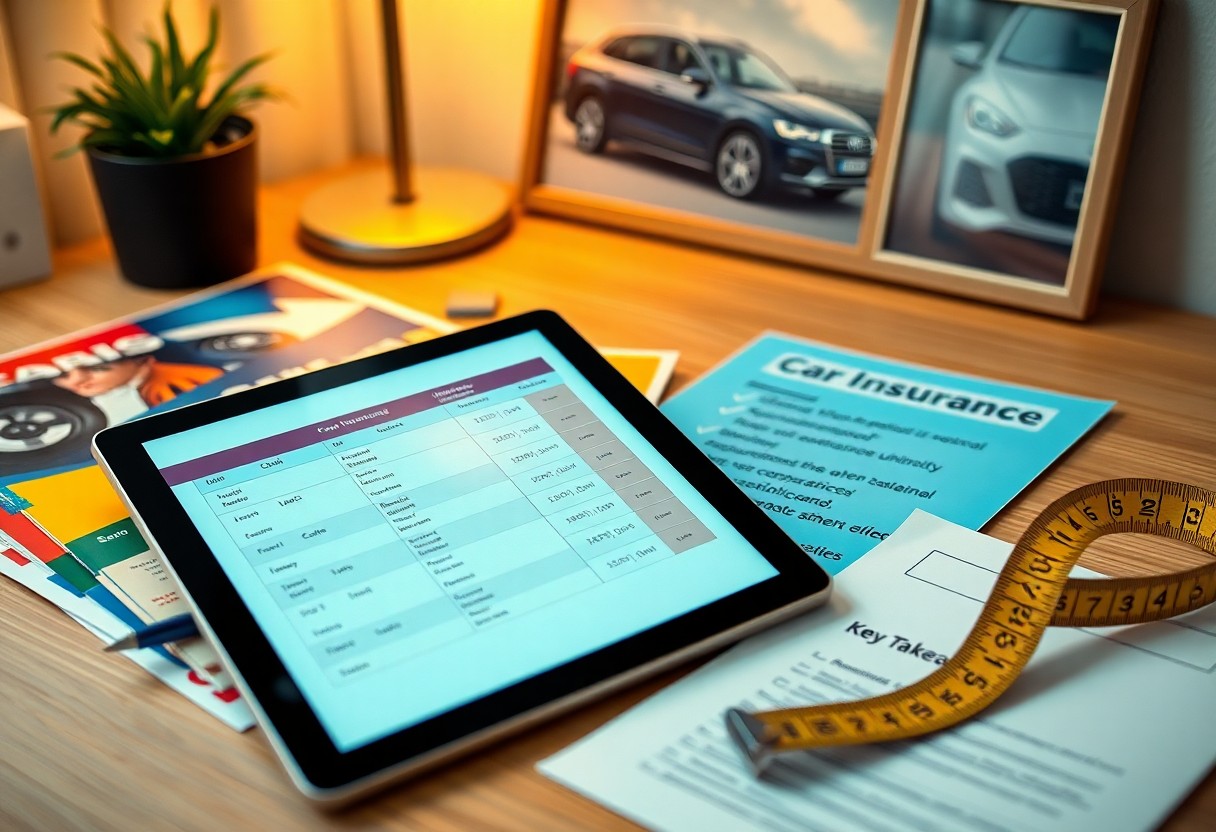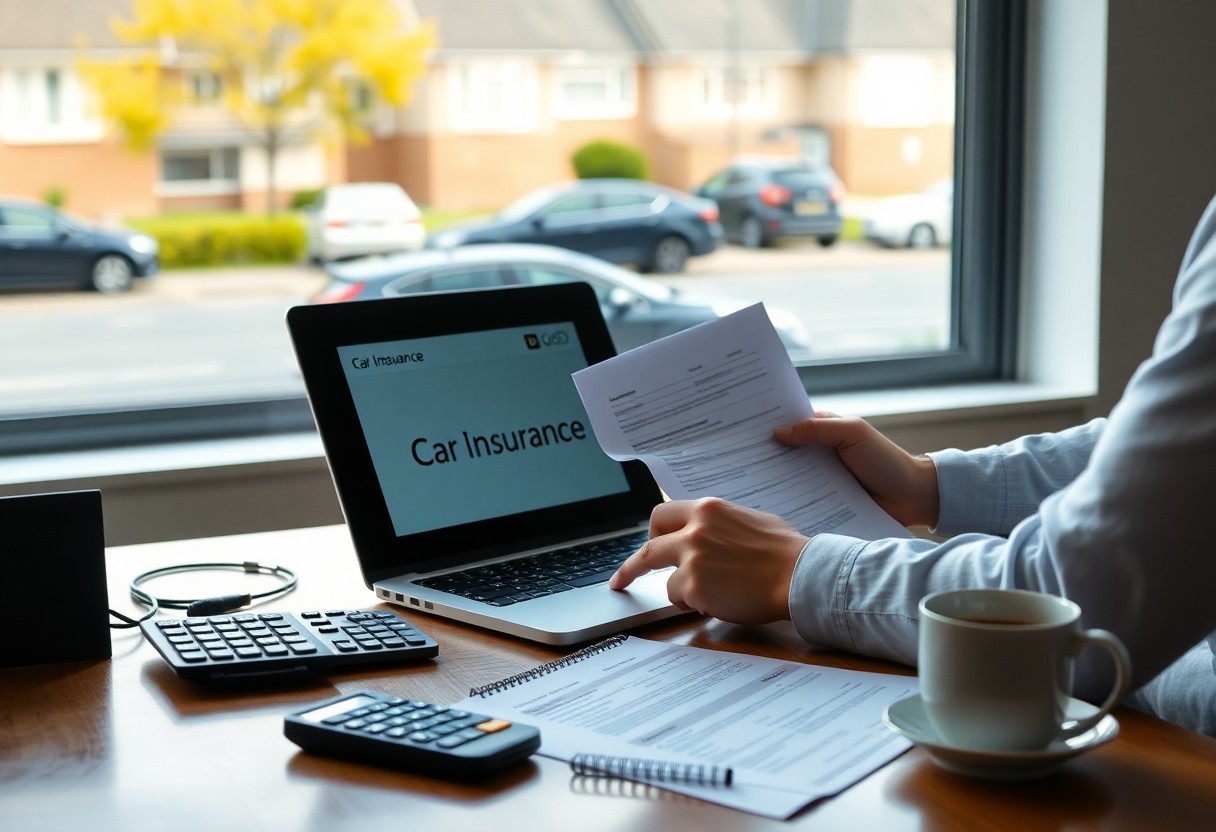It’s vital that you understand how to secure the best car insurance policy for your needs. By following these proven steps, you can navigate the complex world of car insurance with confidence and ensure that you obtain a policy that adequately protects you and your assets. From evaluating coverage options to comparing quotes, you’ll discover how to make informed decisions that enhance your peace of mind while driving.

Key Takeaways:
- Assess your coverage needs based on your driving habits and vehicle value.
- Compare quotes from multiple insurance providers to find the best rates.
- Understand the types of coverage available, including liability, comprehensive, and collision.
- Review customer service ratings and claims processes for insurance companies.
- Look for discounts based on factors like safe driving, bundled policies, or membership affiliations.
Understanding Your Insurance Needs
Identifying your unique insurance needs is fundamental in selecting the right policy. Consider factors such as your driving habits, vehicle type, and financial situation. Each driver has different requirements, whether you prioritize basic coverage for an older vehicle or comprehensive protection for a new car. Assessing these elements will help you tailor your policy effectively.
Assessing Your Coverage Requirements
Evaluate your potential liabilities to determine necessary coverage levels. If you have assets to protect, opting for higher liability limits may be wise. Conversely, if your vehicle is older, minimal coverage might suffice. Always account for factors like potential medical costs from accidents to better gauge the coverage you need.
Factors Influencing Insurance Rates
Multiple factors impact your insurance rates, including your driving history, credit score, and the make and model of your vehicle. Young drivers often pay more due to inexperience, while those with clean records can access better rates. Additionally, cars with advanced safety features or lower theft rates typically attract lower premiums.
- Driving history
- Credit score
- Vehicle type
- Location
Insurance providers analyze these variables to assess risk. For instance, a comprehensive coverage for a high-performance car may lead to heftier premiums, while low-risk areas often enjoy lower rates. Knowing this allows you to make informed adjustments to reduce costs.
- Location
- Vehicle features
- Claims history
- Discount eligibility
Insurers also factor in local crime rates, weather patterns, and traffic statistics when calculating premiums. You can often save on rates by utilizing available discounts for things like safe driving or bundling policies. Knowing these details empowers you to negotiate or switch carriers for better pricing.
Types of Car Insurance Policies
Understanding the various types of car insurance policies available can empower you to make informed decisions. Policies generally fall into distinct categories, each tailored to your particular needs. Key types include:
- Liability Coverage
- Comprehensive Coverage
- Collision Coverage
- Personal Injury Protection (PIP)
- Uninsured/Underinsured Motorist Coverage
This variety allows you to customize your coverage based on your driving habits and financial situation.
| Policy Type | Description |
| Liability Coverage | Protects against damage you cause to others. |
| Comprehensive Coverage | Covers non-collision-related damages to your vehicle. |
| Collision Coverage | Pays for repairs to your car after an accident. |
| PIP | Covers medical expenses for you and your passengers. |
| Uninsured/Underinsured | Protects you in accidents with uninsured drivers. |
Liability Coverage
Liability coverage is important for any driver as it protects you against potential claims resulting from damages or injuries you may cause in an accident. This coverage is typically required by law and includes two primary components: bodily injury liability and property damage liability. Knowing your state’s minimum requirements helps ensure you remain compliant while providing adequate protection.
Comprehensive and Collision Coverage
Both comprehensive coverage and collision coverage are critical for safeguarding your vehicle. Comprehensive coverage protects against events like theft, vandalism, or natural disasters, while collision coverage pays for damage to your car from accidents, regardless of fault. Together, they provide a robust shield for your investment.
In more detail, comprehensive coverage typically includes incidents such as fire, flooding, and falling objects, offering peace of mind that your vehicle is secure from unexpected events. Collision coverage, on the other hand, is particularly vital for drivers at higher risk of accidents, as it covers repair costs without considering fault. Investing in both options enhances your protection, ensuring you’re better prepared financially to handle any situation that may arise on the road.

Researching Insurance Providers
Finding the right insurance provider involves extensive research. Start by compiling a list of reputable companies that offer car insurance. Check their websites for coverage options, discounts, and additional services. Use online resources and comparison tools to analyze quotes, ensuring you get a fair market rate. Consider reaching out to agents for personalized insights tailored to your specific needs.
Evaluating Financial Stability
Your insurance provider’s financial stability is a key factor in ensuring they can pay out claims when needed. Research their ratings from independent agencies like A.M. Best or Standard & Poor’s, which assess their fiscal health and ability to meet obligations. Companies with higher ratings typically indicate strong performance and reliability.
Reading Customer Reviews and Ratings
Customer reviews and ratings offer a window into the actual experiences of policyholders. Check platforms like Yelp or J.D. Power for insights on claim processing times and customer service quality. Look for common themes, such as complaints about slow claims or positive experiences that highlight excellent support. Gathering this information helps shape your understanding of potential providers.
Dive deeper into reviews to gauge customer sentiment. Analyze feedback about the claims process, as speed and efficiency can significantly impact your experience during accidents or emergencies. Check for patterns in user stories; frequent complaints about delayed responses or poor service indicate potential red flags, whereas consistent praise for responsiveness can reassure you about the provider’s reliability. The trend of ratings over time is also telling, showing how a company adapts to customer needs or resolves issues.
Comparing Quotes
Gathering and comparing quotes is imperative in finding the best car insurance policy. Focus on multiple insurers to ensure you evaluate a range of options. Prices can vary significantly for similar coverage, so examining the details is key. Use resources like How to Shop for Car Insurance [Guide] to streamline the process and gain insights into different policies.
Comparison Factors
| Coverage Type | Cost of Premium |
| Deductibles | Customer Ratings |
| Discounts Offered | Claim Processing Time |
Utilizing Online Comparison Tools
Online comparison tools simplify the process of evaluating various car insurance options. These platforms allow you to enter your information once and receive multiple quotes from leading insurers. Features to compare include premiums, coverage limits, and deductibles, enabling you to pinpoint cost-effective options that meet your needs efficiently.
Online Tool Features
| Instant Quote Generation | User Reviews and Ratings |
| Policy Customization Options | Claim History Tracking |
| Location-Specific Pricing | Coverage Recommendations |
Understanding Policy Inclusions and Exclusions
Your car insurance policy will include specific inclusions that detail what is covered, such as liability protection and collision coverage. Equally vital are the exclusions, which outline what is not covered, such as incidents involving uninsured drivers or intentional damage. This knowledge helps you avoid surprises during claims and ensures your policy aligns with your risk tolerance and needs.
Being well-versed in your policy’s inclusions and exclusions prevents unexpected costs after an accident. For instance, while comprehensive coverage protects against theft and natural disasters, it might not cover damage caused while driving a rental car. Additionally, some policies exclude coverage when the car is used for commercial purposes, highlighting the necessity of understanding these terms. A thorough review can save you from costly lapses in coverage.
Discounts and Savings Opportunities
Exploring discounts and savings opportunities can significantly reduce your car insurance premium. Many insurance companies offer various incentives, allowing you to save money by meeting specific criteria or qualifying for discounts based on your driving habits, vehicle type, or other factors. Leveraging these opportunities is vital to ensure you’re not overpaying for your coverage.
Common Discounts Offered
Insurance providers commonly offer discounts such as multi-policy discounts for bundling home and auto insurance, safe driver discounts for maintaining a clean driving record, and good student discounts for young drivers with high academic performance. Owning a certified anti-theft device or completing a defensive driving course can also unlock additional savings.
How to Qualify for Lower Rates
Qualifying for lower rates often involves demonstrating responsible behavior, such as maintaining a clean driving record or completing approved driver safety courses. Additionally, factors like your credit score, the safety features of your vehicle, and annual mileage can influence your premium. Engaging with your insurer about your specific situation can reveal opportunities for savings.
Improving your credit score can lead to significant savings on your car insurance. Insurers frequently assess your credit history as a factor in determining risk; better credit often translates to lower rates. Keep your credit utilization below 30%, pay bills on time, and review your credit report for errors. Additionally, consider choosing a vehicle with advanced safety ratings or features, as these can further qualify you for lower premiums. Exploring all available discounts and discussing them with your insurance agent will help maximize your savings potential.
Finalizing Your Policy
Before you lock in your car insurance policy, ensure that every detail aligns with your needs. This includes confirming the coverage limits, deductibles, and premium amounts. Additionally, verify the payment options available to you, and inquire about any discounts for bundling policies or safe driving records that could lower your costs.
Reviewing the Terms and Conditions
Thoroughly reading the terms and conditions of your car insurance policy prevents unexpected surprises later. Focus on key aspects like exclusions, claims procedures, and coverage specifics. Each policy can vary significantly, so understanding these elements will help you gauge the policy’s suitability for your lifestyle and driving habits.
The Importance of Regular Policy Updates
Keeping your car insurance policy updated ensures you maintain optimal coverage as your life changes. Changes such as moving to a new area, purchasing a new vehicle, or changes in your driving habits can impact your insurance needs significantly.
Staying proactive about policy updates allows you to adapt your coverage to reflect your current situation. For instance, relocating to an area with higher crime rates might warrant enhanced theft coverage. Moreover, if you switch jobs and drive more or less frequently, adjusting your policy could lead to savings or provide necessary extra protection. Regularly reviewing your policy at least once a year or after any significant life event can save you money while ensuring your coverage is tailored to your current circumstances.
Conclusion
Ultimately, securing the right car insurance policy involves understanding your coverage needs, comparing multiple quotes, and reviewing the policy details carefully. By assessing your driving habits, considering available discounts, and checking the insurer’s reputation, you can make an informed decision that best protects you and your assets. Stay proactive by reviewing your policy regularly to adapt to any changes in your circumstances, ensuring your coverage always meets your requirements.
FAQ
Q: What should I consider when choosing a car insurance policy?
A: Consider factors such as coverage types, premium costs, deductibles, your driving history, and the vehicle’s make and model. Evaluate the financial strength and customer service reputation of the insurance provider as well.
Q: How can I determine the amount of coverage I need?
A: Assess your personal assets, the value of your vehicle, and local requirements. Consider liability coverage limits that protect your financial interests in case of an accident.
Q: Are there different types of car insurance coverage?
A: Yes, common types include liability coverage, collision coverage, comprehensive coverage, personal injury protection, and uninsured motorist coverage. Each serves a different purpose in protecting against various risks.
Q: How can I save money on my car insurance policy?
A: You can save money by shopping around for quotes, asking about discounts (such as multi-policy discounts), raising your deductible, maintaining a good credit score, and taking a defensive driving course.
Q: What should I do if I have an accident and need to file a claim?
A: First, ensure safety and call emergency services if needed. Document the accident scene, gather information, and notify your insurance company as soon as possible to initiate the claims process.





0 Comments